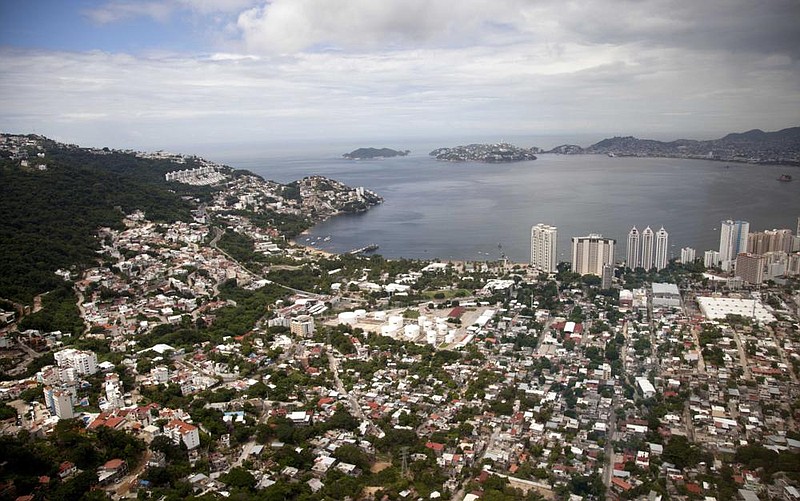MEXICO CITY -- Mexico's Pacific coast resort of Acapulco is putting its hopes on a return of tourists as the number of coronavirus cases drops and the violence that drove travelers away slowly declines.
The governor of the state of Guerrero said Friday that hotels will now be allowed to accept guests at 40% capacity, up from 30% previously under pandemic restrictions. Gov. Hector Astudillo said Acapulco has reduced the number of covid-19 deaths to an average of 9.6 per day and alleviated the overcrowding that plagued the city's hospitals earlier in the pandemic.
The city, once ranked as the fifth-most-deadly in Mexico, has fallen to 44th place. Homicides were down about 20% in the first half of 2020, compared with the same period in 2019.
President Andres Manuel Lopez Obrador visited the once-glamorous resort Friday and pledged to fix pollution problems that affect its famous bay.
"We are going to clean up Acapulco; we are going to clean up the bay so that there is no more pollution. That is my commitment," he said. In June, heavy rains caused storm drains to overflow, sending sewage and waste into the bay.
Lopez Obrador, unlike most experts, predicted a quick end to the pandemic.
"What I feel -- my prediction -- is that soon, very soon, we will return to normality," the president said. "Economic activity is returning, tourism is returning to Acapulco, but I predict that in a month, two months, we will have very favorable conditions."
Even if those predictions are fulfilled, it will still be a long road back for Mexico's battered tourism industry. In the first quarter, tourism revenue was down 51.5%, and figures for the second quarter are certain to be worse.
With about 800,000 hotel rooms, Mexico has the world's seventh-largest hotel infrastructure. In 2018, tourism accounted for 8.7% of Mexico's GDP and provided about 2.3 million jobs.
Many of those jobs have evaporated in the pandemic. Even under the best-case scenario, if travel alerts were lifted -- Mexico currently has the highest "do not travel" alert from the U.S. State Department -- hotels in Mexico would end the year with only about 47% occupancy, on average.
Mexico has also suffered from some clumsy efforts at tourism promotion.
In early August, the country's VisitMexico.com site was plagued by systematic bad translations of place names, with the state of Nuevo Leon becoming "New Lion" and the well-known Caribbean resort of Tulum somehow becoming "Jumpsuit." The website has since been replaced by an online image promising a new site will come online Thursday.
[CORONAVIRUS: Click here for our complete coverage » arkansasonline.com/coronavirus]
A few days earlier, officials took down a pair of Acapulco video ads touting the faded resort's reputation as a nightclubbing spot -- despite the fact that nightclubs are currently closed to enforce social distancing. They said the ads weren't appropriate during the coronavirus pandemic.
Acapulco was once a glamorous getaway that attracted an international jet set. It was during a vacation there in the 1960s that novelist Gabriel Garcia Marquez came up with the idea for "100 Years of Solitude." In 1975, Bill and Hillary Clinton went there for their honeymoon.
But in the 1970s and '80s, the resort's infrastructure crumbled. Poor, crowded settlements sprang up inland from the bay, sparking rising problems of unemployment, crime and pollution. Starting around 2006, drug gang violence made Acapulco one of Mexico's most violent cities.
Lopez Obrador stressed that authorities would have to continue fighting crime and violence.
"There may or may not be a pandemic, and you may have very beautiful beaches, but if there isn't safety, you can't have progress," Lopez Obrador said.
